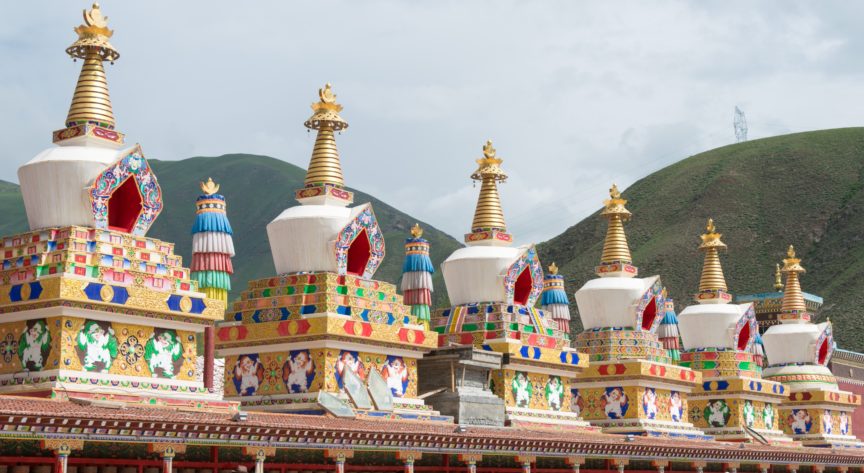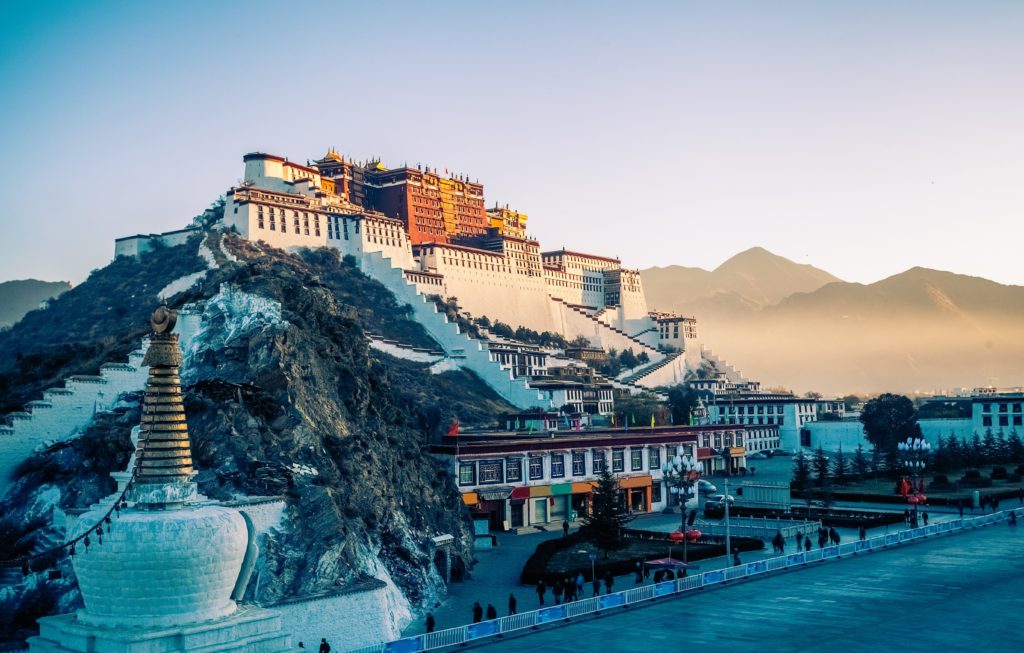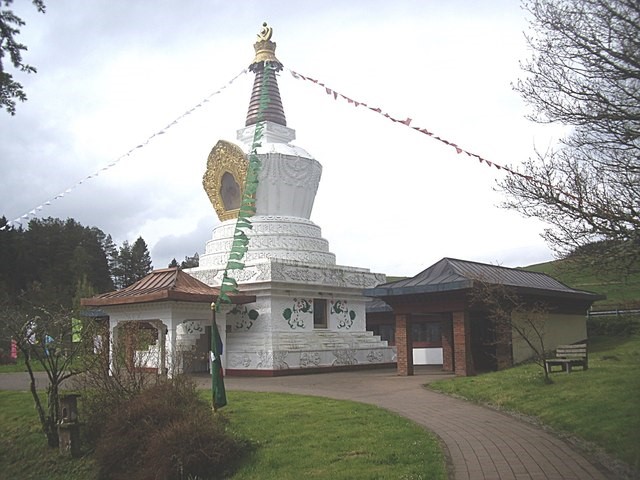Chorten or Stupa (མཆོད་རྟེན་དཀར་པོ།) is an important religious monument in Buddhism, symbolizing Buddha’s presence. It also holds precious Buddhist relics and sometimes even preserved bodies of renowned lamas. Tibetans believe that performing Koras of the monument is an act of high merit.
Structure of Chorten
The shape of the Stupa represents Buddha with a crown who is seated in a posture of meditation on a lion throne. The top of the spire, with the well-known ‘twin-symbol’ uniting the sun and moon, is the crown, the square at the spire’s base is his head, the vase shape symbolizes his body, the steps (four) of the lower terrace are his legs while the square foundation base is his throne.
Types of Chortens
In Tibetan Buddhism, there are eight different kinds of chortens, each signifying a major event in the life of Buddha Shakyamuni.
1. Lotus Blossom Stupa
The Lotus Blossom Stupa, also known as Stupa of Heaped Lotuses, represents the birth of Buddha. It is said that at the time of his birth, he took seven steps in all four directions signifying love, joy, compassion, and equality. This chorten generally has four circular steps at the base and is decorated with designs of lotus petals.
2. Enlightenment Stupa
Also termed as Stupa of the Conquest of Mara, this stupa signifies the time when Buddha under the Bodhi tree in Bodh Gaya attained enlightenment. It is said that the demon Mara tried to tempt and attack him, but Buddha come out the conqueror.
3. Stupa of Many Doors or Gates
Buddha then preached his teachings to his followers near Sarnath. The doors on this monument signify the opening of the doors to Dharma and point to the teachings: Four Noble Truths, Noble Eightfold Path, Twelve Links in the Chain of Dependent Origination, and Six Perfections.
4. Stupa Of Descent From The God Realm
When Bhudda’s mother was reincarnated in another realm, he went there to teach her Dharma. This chorten consists of a ladder on each side and commemorates the return of Bhudda back to earth.
5. Stupa of Great Miracles or Stupa of Conquest of the Tirthikas
When Buddha was 50 years old, he performed various miracles to prove his spirituality and even overpowered several demons.
6. Stupa of Reconciliation
This octagonal chorten honours Buddha’s efforts in solving a conflict among his monastic followers. It was built in the kingdom of Magadha where the conflict resolution took place.
7. Stupa of Complete Victory
This chorten has only three circular steps which are undecorated. It honors Buddha’s extension of his life by three months when his followers pleaded him to stay.
8. Stupa of Nirvana
The Nirvana chorten represents Buddha’s death and him achieving a state of true peace. This monument is undecorated and appears to be bell-shaped.



